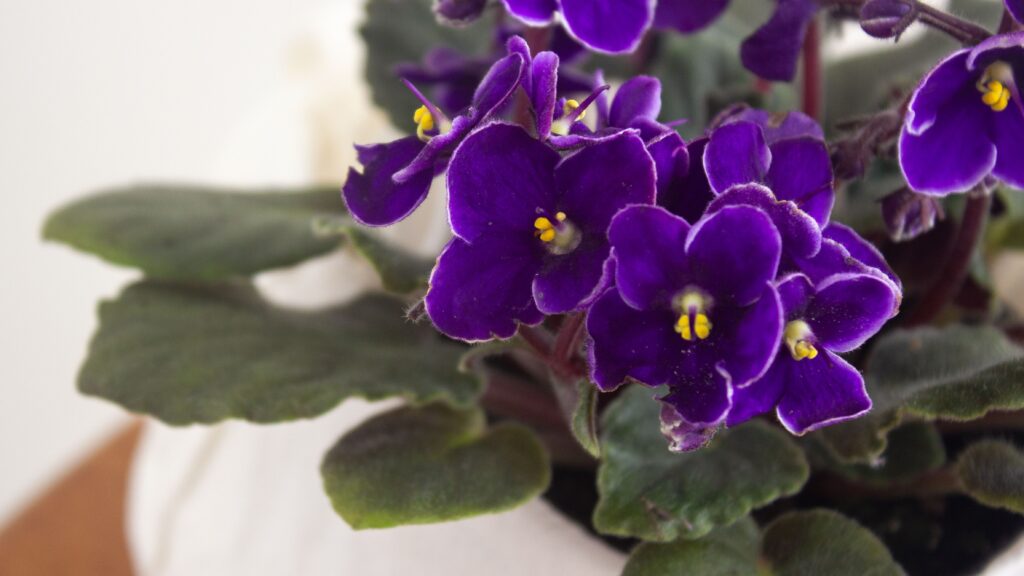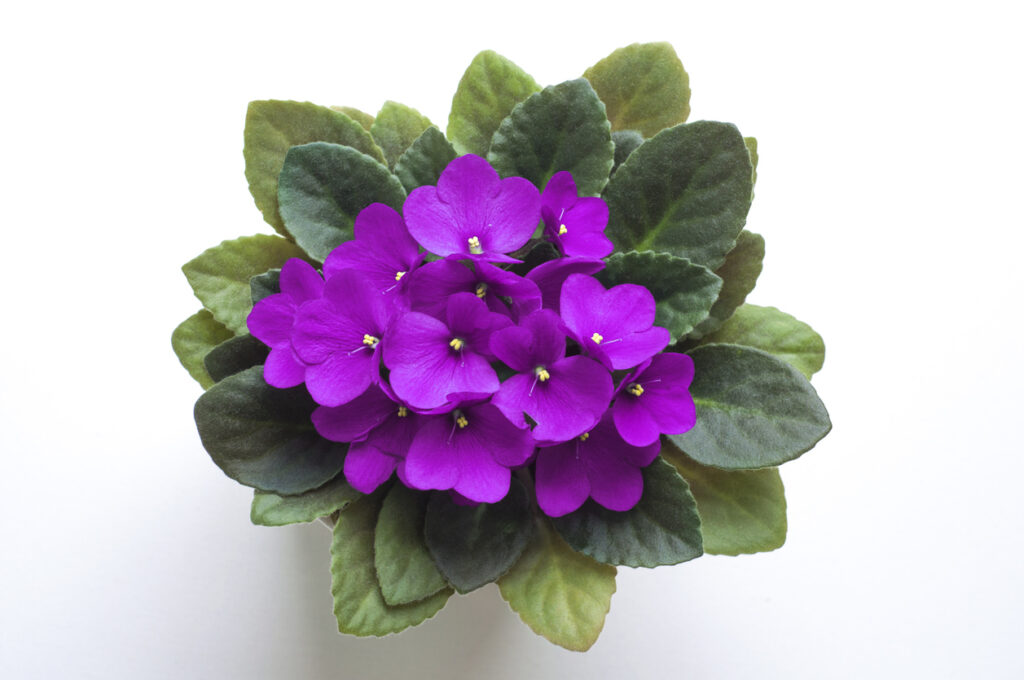African Violets (Saintpaulia) have the type of appeal that brightens up the surroundings and makes you smile with their nicely formed fuzzy leaves, compact structure, and bright, stunning blossoms. Here are some helpful hints whether you’re new to growing African violets at home or simply want to learn more about keeping them healthy and happy.

- Climate: African violets are designed to be kept indoors all year. Although some gardeners move them outside as the weather warms up, they are vulnerable to pest damage and are healthier and more attractive when maintained indoors.
- Natural light: African violets prefer indirect light over direct sunlight, which can cause their leaves to burn. As long as there is plenty of indirect sunlight for them to absorb, they make excellent windowsill plants. Windowsills facing east or west are ideal for the plants, which require 10-14 hours of light and eight hours of darkness every day to blossom to their full potential.
- Water: There are a variety of methods for watering African violets, but the most important rule is to keep the soil damp to the touch but never drenched or sodden. If you’re watering by hand, try not to splash any water on the leaves, since this may cause them to become spotty. You may avoid the spotty plant look by watering from the bottom up (allowing the plant soak up water from a dish or saucer the pot has been placed in).
- Temperature: African violets, like most humans, like warm indoor temperatures of 65 to 75 degrees Fahrenheit.
- Humidity: African violets require a humid environment, which is higher than that found in most houses. If you utilize a bottom-up watering system, your African violet will already benefit from the humidity created by this manner. Another helpful way is to keep the plants damp by placing them in dishes or trays of pebbles.

- Selecting Your Plant: When selecting your African violet, apply the same common sense you would when selecting any other plant for your home or yard. Choose the plant that appears to be the healthiest, with the deepest green leaves and the healthiest buds, and get your violets from a reputable grower or nursery. You may also go on Amazon; there are many great testimonials from people who have purchased LIVE plants there.
7. Container Selection: All potted plants, including African violets, should be put in pots with enough drainage holes. If you can’t live without a hole-less ceramic pot, place the plant in a plastic container with drainage holes and place that container inside the ceramic one. Remove the plastic pot from the ceramic pot and set it aside until all of the extra water has been drained.
8. Soil: Again, drainage is critical to the health of your African violet, so use a commercial mix of sterile potting soil and perlite. If you need to re-pot, use sterile potting mix.

9. Feeding: African violets don’t need much fertilizer and can be overfed; too much or too little fertilizer might result in a lot of green foliage but few blooms. If your plant isn’t growing or blooming as frequently as it should, apply a fertilizer developed particularly for African violets and don’t overdo it.
10. Propagation: African violets love to be a little root-bound in their pots, as this is when they produce offspring that can become new plants. When new crowns form in the pot, remove the entire plant so you may gently separate the new growth and set it in its own container. You may also take a leaf from the plant and root it in water, but make sure it isn’t completely submerged. A third approach is to clip off a leaf with the stem intact, soak the stem in rooting hormone, and then plant it in sterile potting mix.


